VCs
Victoria Crosses at Gully Ravine
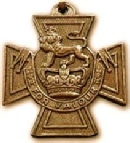
The Victoria Cross is the highest award for valour in the British military.
Thirty six VCs were won overall at Gallipoli, and their story is told elsewhere.
In Gully Ravine and its immediate vicinity on the spurs, the number is just five.
Captain Gerald O’Sullivan VC, Royal Inniskilling Fusiliers, 1st Battalion, A Company
 The citation, published in the Edinburgh Gazette on 3 September 1915, reads:
The citation, published in the Edinburgh Gazette on 3 September 1915, reads:
‘For most conspicuous bravery during operations south-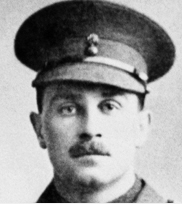 a portion of a trench which had been lost should be regained, Captain O’Sullivan, although not belonging to the troops at this point volunteered to lead a party of bomb throwers to effect the recapture. He advanced in the open under a very heavy fire and in order to throw his bombs with greater effect, got up on the parapet, where he was completely exposed to the fire of the enemy occupying the trench. He was finally wounded, but not before his inspiring example had led his party to make further efforts, which resulted in the recapture of the trench. On the night of 18th–19th June, 1915, Captain O’Sullivan had saved a critical situation in the same locality by his personal gallantry and good leading.’
a portion of a trench which had been lost should be regained, Captain O’Sullivan, although not belonging to the troops at this point volunteered to lead a party of bomb throwers to effect the recapture. He advanced in the open under a very heavy fire and in order to throw his bombs with greater effect, got up on the parapet, where he was completely exposed to the fire of the enemy occupying the trench. He was finally wounded, but not before his inspiring example had led his party to make further efforts, which resulted in the recapture of the trench. On the night of 18th–19th June, 1915, Captain O’Sullivan had saved a critical situation in the same locality by his personal gallantry and good leading.’
This action took place in the Inniskilling Inch trench at the extreme NE of the line at Fusillier’s Bluff, where the British faced almost at right angles eastward towards the Turkish lines along the line of the Nullah.
O’Sullivan was also directly involved in the same action as that in which sergeant Somers, below, won his own VC. This was in the area of trench J12.
Captain O’Sullivan was born in 1888 in Frankfield, Douglas, in County Cork and died on the 21st August 1915 at Scimitar Hill, Suvla Bay, Gallipoli. His body was not recovered and he is commemorated on the Helles Memorial at Cape Helles and on the Dorchester War Memorial, this town being the family home. He is also remembered on a wall plaque in Sherborne Roman Catholic Church. His VC is now in the Lord Ashcroft collection.
Sergeant James Somers VC, Royal Inniskilling Fusiliers, 2nd Battalion
His citation  appeared in the London Gazette of 1 September 1915.
appeared in the London Gazette of 1 September 1915.
“For most conspicuous bravery on the night of 1-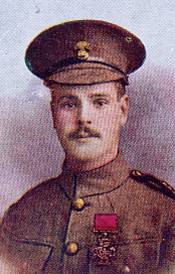 had retired from a sap, Sergeant Somers remained alone on the spot until a party brought up bombs. He then climbed over into the Turkish trench, and bombed the Turks with great effect. Later on, he advanced into the open under very heavy fire, and held back the enemy by throwing bombs into their flank until a barricade had been established. During this period he frequently ran to and from our trenches to obtain fresh supplies of bombs. By his great gallantry and coolness Sergeant Somers was largely instrumental in effecting the recapture of a portion of our trench, which had been lost.”
had retired from a sap, Sergeant Somers remained alone on the spot until a party brought up bombs. He then climbed over into the Turkish trench, and bombed the Turks with great effect. Later on, he advanced into the open under very heavy fire, and held back the enemy by throwing bombs into their flank until a barricade had been established. During this period he frequently ran to and from our trenches to obtain fresh supplies of bombs. By his great gallantry and coolness Sergeant Somers was largely instrumental in effecting the recapture of a portion of our trench, which had been lost.”
He wrote his own account in a letter to his father:
“I beat the Turks out of our trench single-
After being gassed later in the war, he died at his home in Cloughjordan, County Tipperary on 7th May 1918. He is buried in the churchyard at Modreemy, County Tipperary.
Second Lieutenant Herbert James VC, Worcester Regiment, 4th Battalion
Citation in the London Gazette, 1st September 1915.
 “For most conspicuous bravery during the operations in the Southern Zone of the Gallipoli Peninsula. On 28th June 1915, when a portion of the regiment had
“For most conspicuous bravery during the operations in the Southern Zone of the Gallipoli Peninsula. On 28th June 1915, when a portion of the regiment had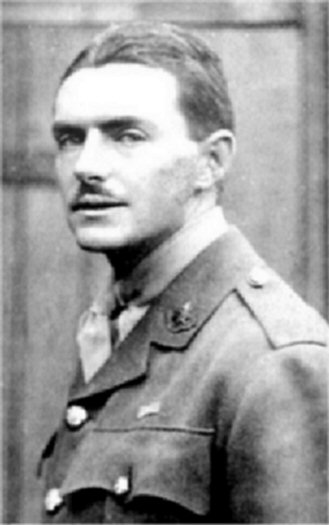 been checked, owing to all the officers being put out of action, Second-
been checked, owing to all the officers being put out of action, Second-
After a continued and distinguished military career, James died in rather tragic circumstances in 1958. Living as something of a recluse, he suffered a heart attack and died in hospital after he had lain alone for perhaps six days in his flat in Kensington. His VC is now in a collection in Australia.The Worcester Regiment website has a detailed page about Second Lieutenant James here.
Second Lieutenant Alfred Victor Smith VC, East Lancashire Regiment, 5th Battalion, D company.
Citation on the London Gazette, 3rd March 1916.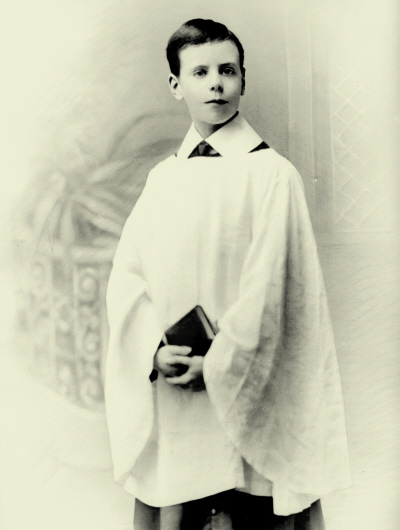
 ‘For most conspicuous bravery. He was in the act of throwing a grenade when it slipped from his hand and fell to the bottom of the trench close to several officers and men. He immediately shouted a warning and jumped clear to safety. He then saw that the officers and men were unable to find cover and knowing that the grenade was due to explode at any moment, he returned and flung himself upon it. He was instantly killed by the explosion. His magnificent act of self-
‘For most conspicuous bravery. He was in the act of throwing a grenade when it slipped from his hand and fell to the bottom of the trench close to several officers and men. He immediately shouted a warning and jumped clear to safety. He then saw that the officers and men were unable to find cover and knowing that the grenade was due to explode at any moment, he returned and flung himself upon it. He was instantly killed by the explosion. His magnificent act of self-
Alfred was born on 22nd July 1891 and died on 23rd December 1915 in the action described above. This took place in the front line at Fusilier’s Bluff.
Although I have no direct personal connection with Alfred, his story is one that is very close to me because he had links with St Albans, where I live and work.
Alfred’s father was a police officer and the family was quite mobile during his upbringing. In his early teens he lived in St Albans and was a chorister in the cathedral choir. When his father was promoted to a senior post in Burnley the family moved again and on leaving school Alfred entered the Blackpool police force, joining the East Lancashires at the outbreak of war.
The two images of Alfred shown here, a photo of him as a choir boy and a painting depicting him holding a grenade, (albeit a Mk1 or Mk2 device, of later provenance), now hang on the wall in the choir school in St Albans Cathedral.
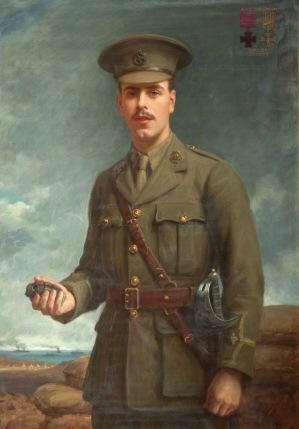
Alfred was initially buried at the head of Y Ravine, but was later re-
SUNSET and evening star,
And one clear call for me!
And may there be no moaning of the bar,
When I put out to sea,
But such a tide as moving seems asleep,
Too full for sound and foam,
When that which drew from out the boundless deep
Turns again home.
Twilight and evening bell,
And after that the dark!
And may there be no sadness or farewell,
When I embark;
For tho’ from out our bourne of Time and Place
The flood may bear me far
I hope to see my Pilot face to face
When I have crost the bar.
Second Lieutenant George Moor VC, Royal Hampshire Regiment, 2nd Battalion.
 Moor was just eighteen years old when, on 5th June 1915, at the 3rd Battle of Krithia, he advanced with his battalion on Fir Tree Spur against trenches H8 and 9. These trenches were captured, but the next morning a counter attack drove the Hampshires back with heavy losses. Moor took command to stop the retreat. His citation reads:
Moor was just eighteen years old when, on 5th June 1915, at the 3rd Battle of Krithia, he advanced with his battalion on Fir Tree Spur against trenches H8 and 9. These trenches were captured, but the next morning a counter attack drove the Hampshires back with heavy losses. Moor took command to stop the retreat. His citation reads: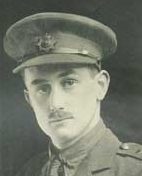
“For most conspicuous bravery and resource on the 5th June 1915, during operations South of Krithia, Dardanelles. When a detachment of a battalion on his left, which had lost all its officers, was rapidly retiring before a heavy Turkish attack, 2nd Lieutenant Moor immediately grasping the danger to the remainder of the line, dashed back some two hundred yards, stemmed the retirement, led back the men, and recaptured the lost trench. This young officer who only joined the Army in October, 1914, by his personal bravery and presence of mind saved a dangerous situation.”
Moor was evacuated from Gallipoli in September 1915 when he succumbed to dysentery, but went on to serve on the Western Front, ironically dying from flu just eight days before the Armistice. He is buried at Y Farm Cemetery at Armentieres in France.
Two other VCs should be mentioned here. Although in these cases the medal was not
actually won in Gully Ravine, both men had very close associations with the area.
Lance –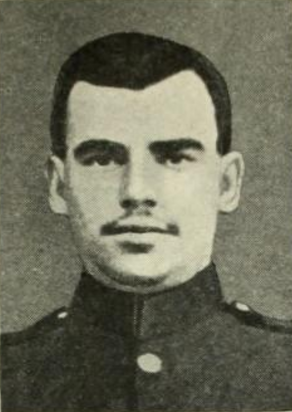
 Kenealy was born in Wexford in 1886 and was 23 he went to war. He won his VC on the day of the Gallipoli landings, 25th April 1915, at W beach, making him, along with Cuthbert Bromley below, one of the celebrated ‘Six VCs before breakfast’ awarded to the Lancashire Fusiliers on that day.
Kenealy was born in Wexford in 1886 and was 23 he went to war. He won his VC on the day of the Gallipoli landings, 25th April 1915, at W beach, making him, along with Cuthbert Bromley below, one of the celebrated ‘Six VCs before breakfast’ awarded to the Lancashire Fusiliers on that day.
He was severely wounded on 28th June 1915 at the height of the Battle of Gully Ravine, and died the following day. He is fittingly buried in Lancashire Landing CWGC cemetery above W Beach.
A rather tragic postscript is that the news of his death took until October 1915 to reach his family. By then, plans were well advanced for his local honouring on his return. His citation appeared in The London Gazette on 24 August 1915.
‘On 25th April, 1915, three companies, and the Headquarters of the 1st Bn. Lancashire Fusiliers, in effecting a landing on the Gallipoli Peninsula to the West of Cape Helles, were met by a very deadly fire from hidden machine guns which caused a great number of casualties. The survivors, however, rushed up toand cut the wire entanglements, notwithstanding the terrific fire from the enemy, and after overcoming supreme difficulties, the cliffs were gained and the position maintained. Amongst the many very gallant officers and men engaged in this most hazardous undertaking, Capt. Willis, Serjt. Richards, and Pte. Kenealy have been selected by their comrades as having performed the most signal acts of bravery and devotion to duty.’
Major Cuthbert Bromley VC, Lancashire Fusiliers, 1st Battalion.
 Bromley was born and raised in Seaford, Sussex. His family home at Sutton Corner is still there, although it is now a garage, and his name appears on the nearby war memorial. He was a prodigious sportsman and was hugely popular with his men. The Revd Oswin Creighton, who appears elsewhere on this site, refers to him on a number of occasions in his own diaries. Like Kenealy above, Bromley’s VC was won at W Beach on 25th April 1915.
Bromley was born and raised in Seaford, Sussex. His family home at Sutton Corner is still there, although it is now a garage, and his name appears on the nearby war memorial. He was a prodigious sportsman and was hugely popular with his men. The Revd Oswin Creighton, who appears elsewhere on this site, refers to him on a number of occasions in his own diaries. Like Kenealy above, Bromley’s VC was won at W Beach on 25th April 1915.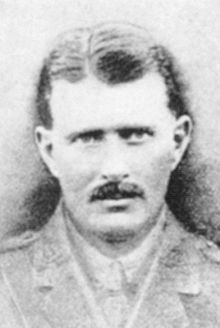
At the Battle of Gully Ravine, finding himself the last senior officer alive in his section, he led his troops over the top and was immediately wounded in the heel. He refused to retire though, using two Turkish rifles as crutches, and only sought medical aid when he was certain that the gains made had been consolidated.
Bromley survived this major battle and was later evacuated to Egypt for medical treatment. He begged to return as soon as possible however and fatefully joined the transport ship ‘Royal Edward’. The ship was torpedoed and sunk by UB-